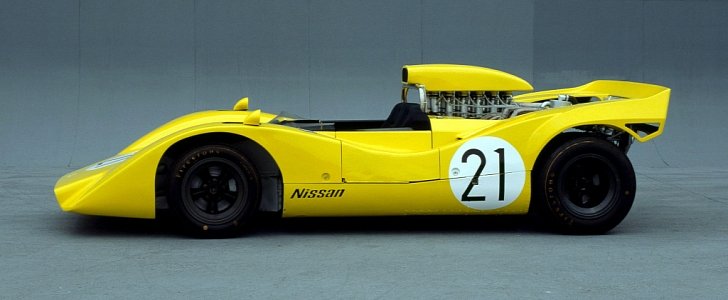At the beginning of the month, two of the newest Japanese car concepts were announced as stars on display at the Petersen Automotive Museum in Los Angeles: the Infiniti Prototype 9 and Prototype 10. But the two are not the only exotic Japanese machines on the grounds these days.
In all, 19 of the rarest vehicles produced by Nippon carmakers are on the grounds of the museum, as part of the tribute envisioned for producers from this part of the world. On all three floors of the location, Japanese cars take center stage.
At ground floor, there isn't much to see apart for a 1997 Toyota Supra Turbo is the main attraction. It is followed on the first floor by a selection of post-war classic cars, spearheaded by Honda’s first mass-produced car, the 1968 S600 Coupe.
The second floor is home to the The Roots of Monozukuri and Fine Tuning displays, which include cars like the 1969 Nissan R382, the first ever Nissan V12 racecar, the 1969 Mazda Cosmo Sport 100S, the world’s first mass-produced two-rotor vehicle, the 1974 Mazda RX-3 tweaked by DNA Garage and a 1993 Toyota Supra Mark IV like the one which featured in The Fast and the Furious original film.
There are some unique models on the floor as well, like the 1978 Dome Zero from the Gran Turismo racing game, and the world’s only 1998 Nissan R390 GT1 in existence.
On the third floor of the museum the 1967 Toyota 2000GT Roadster, from the James Bond 1967 flic You Only Live Twice, is the main dish.
“In one day at the Petersen, guests can experience 60 years of Japanese culture and automotive tradition,” said in a statement Petersen Automotive Museum director Terry L. Karges.
“Our Japanese car collection not only covers the past six decades of Japanese dominance in the domestic market but truly illustrates the artfulness and shrewd attention-to-detail that is characteristic of the Japanese design philosophy.”
The exhibition dedicated to the Japanese is open until next year.
At ground floor, there isn't much to see apart for a 1997 Toyota Supra Turbo is the main attraction. It is followed on the first floor by a selection of post-war classic cars, spearheaded by Honda’s first mass-produced car, the 1968 S600 Coupe.
The second floor is home to the The Roots of Monozukuri and Fine Tuning displays, which include cars like the 1969 Nissan R382, the first ever Nissan V12 racecar, the 1969 Mazda Cosmo Sport 100S, the world’s first mass-produced two-rotor vehicle, the 1974 Mazda RX-3 tweaked by DNA Garage and a 1993 Toyota Supra Mark IV like the one which featured in The Fast and the Furious original film.
There are some unique models on the floor as well, like the 1978 Dome Zero from the Gran Turismo racing game, and the world’s only 1998 Nissan R390 GT1 in existence.
On the third floor of the museum the 1967 Toyota 2000GT Roadster, from the James Bond 1967 flic You Only Live Twice, is the main dish.
“In one day at the Petersen, guests can experience 60 years of Japanese culture and automotive tradition,” said in a statement Petersen Automotive Museum director Terry L. Karges.
“Our Japanese car collection not only covers the past six decades of Japanese dominance in the domestic market but truly illustrates the artfulness and shrewd attention-to-detail that is characteristic of the Japanese design philosophy.”
The exhibition dedicated to the Japanese is open until next year.











